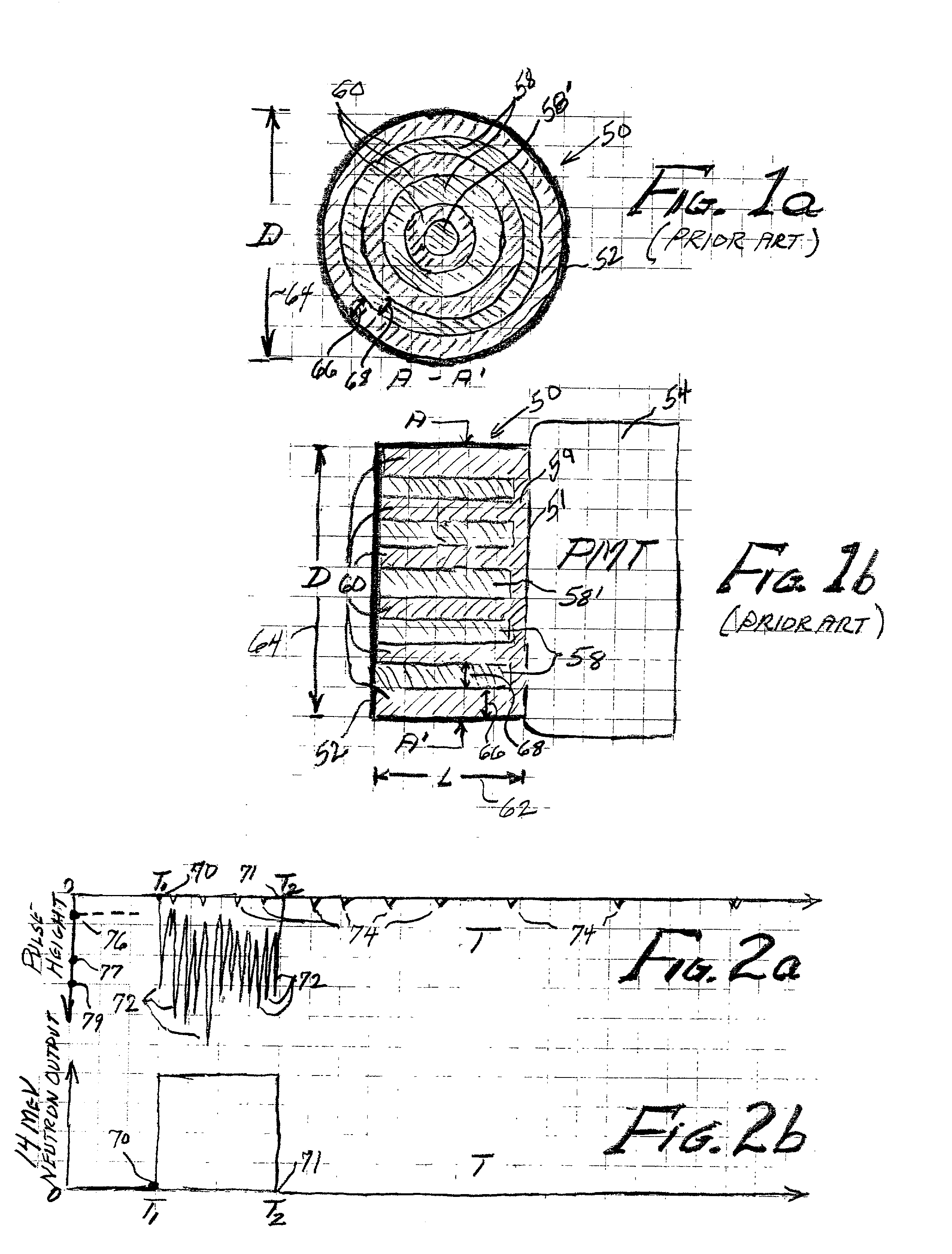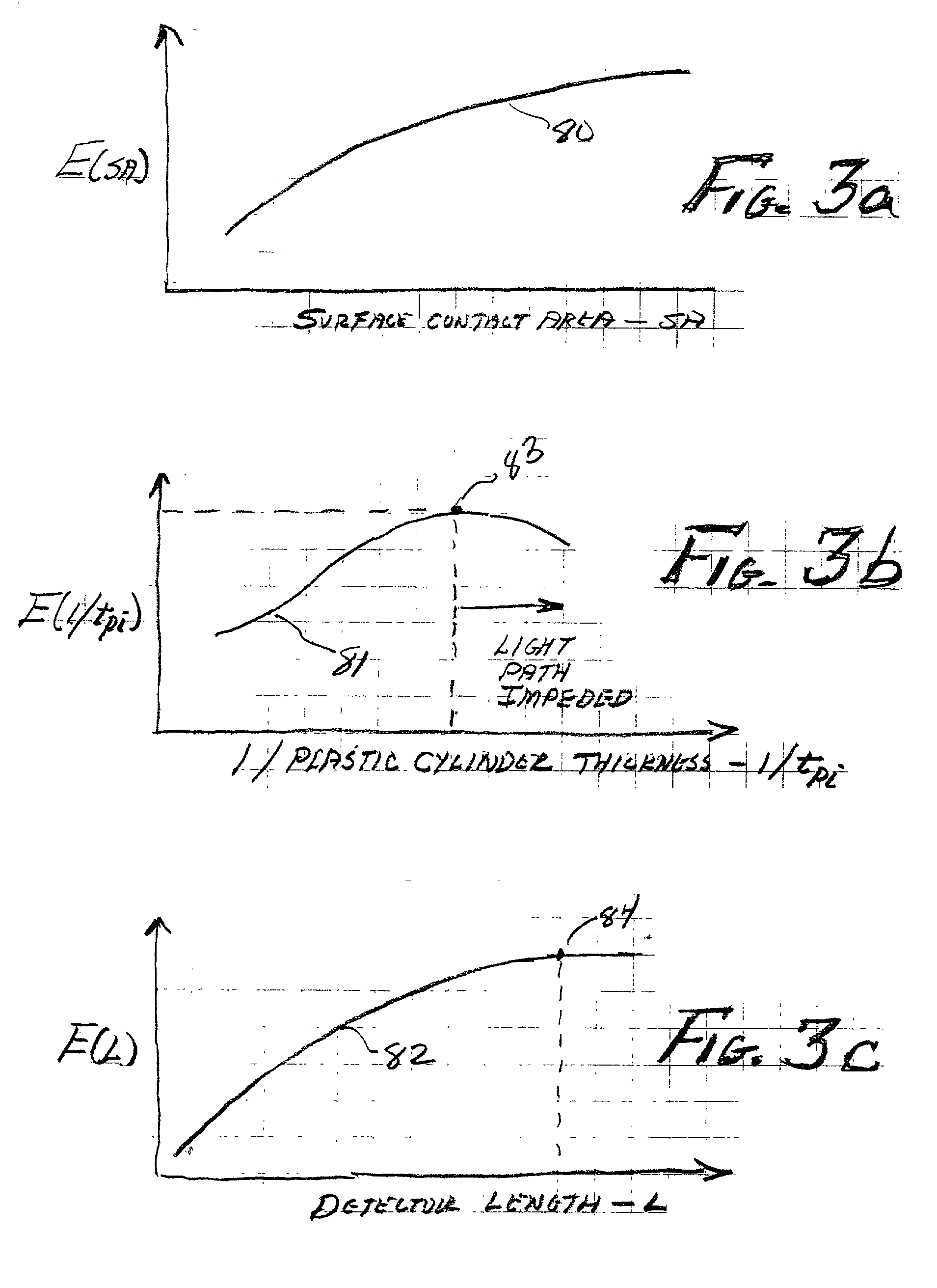Geometrically optimized fast neutron detector
a fast neutron detector and geometrical optimization technology, applied in the direction of radiation intensity measurement, instruments, x/gamma/cosmic radiation measurement, etc., can solve the problem of reducing the gamma ray rejection capability of the detector, cylinders cease to be efficient sources of recoil protons, and the thickness of plastic cylinders is too much
- Summary
- Abstract
- Description
- Claims
- Application Information
AI Technical Summary
Benefits of technology
Problems solved by technology
Method used
Image
Examples
Embodiment Construction
[0051] A fast neutron detector suitable for use in borehole logging instruments must detect neutrons efficiently in the energy ranges from about 1 million electron volts (MeV) to 14 MeV, reject any response to accompanying radiation, be mechanically rugged, and operate at a temperature of about 175.degree. C. The combination of separate regions of activated ZnS scintillator and hydrogen rich plastic produces a suitable fast neutron detector when optically coupled to a photomultiplier (PM) tube. Energetic protons are produced by fast neutrons scattering from hydrogen within the plastic. A scintillation photon is produced when an energetic proton reaches the ZnS scintillator. Because the linear range of energetic protons is very short in both the scintillator and plastic materials, and because light must escape the optically cloudy ZnS region to be detected by the PM tube, the interface between the two materials is critical to the detector's fast neutron response. Therefore, the total...
PUM
 Login to View More
Login to View More Abstract
Description
Claims
Application Information
 Login to View More
Login to View More - R&D
- Intellectual Property
- Life Sciences
- Materials
- Tech Scout
- Unparalleled Data Quality
- Higher Quality Content
- 60% Fewer Hallucinations
Browse by: Latest US Patents, China's latest patents, Technical Efficacy Thesaurus, Application Domain, Technology Topic, Popular Technical Reports.
© 2025 PatSnap. All rights reserved.Legal|Privacy policy|Modern Slavery Act Transparency Statement|Sitemap|About US| Contact US: help@patsnap.com



